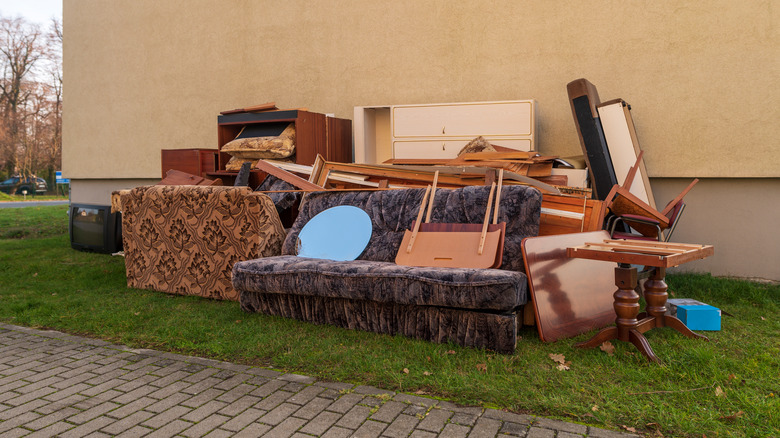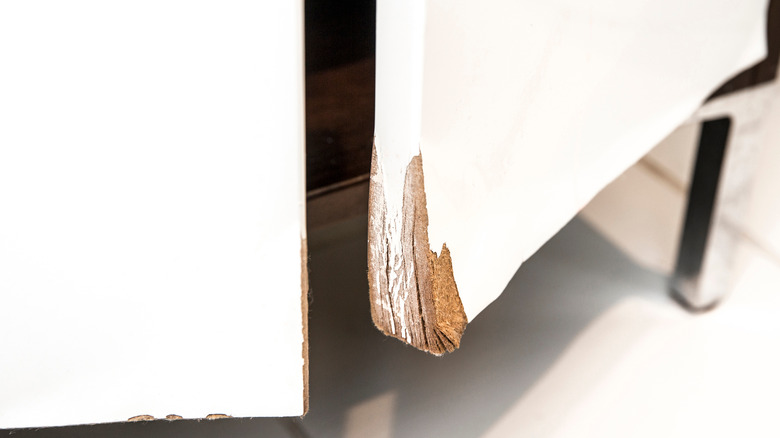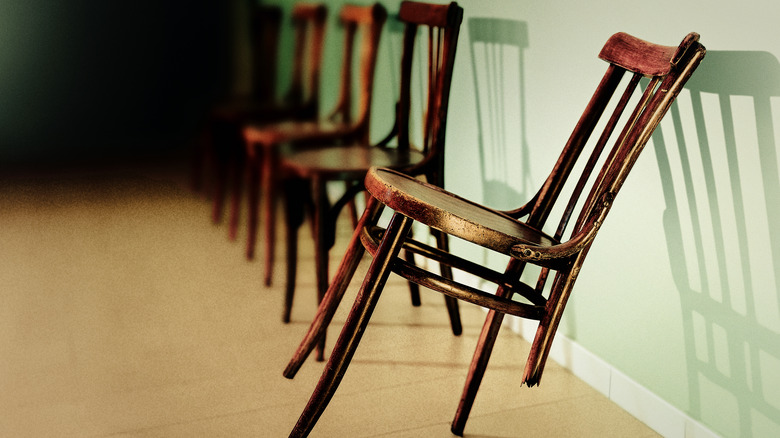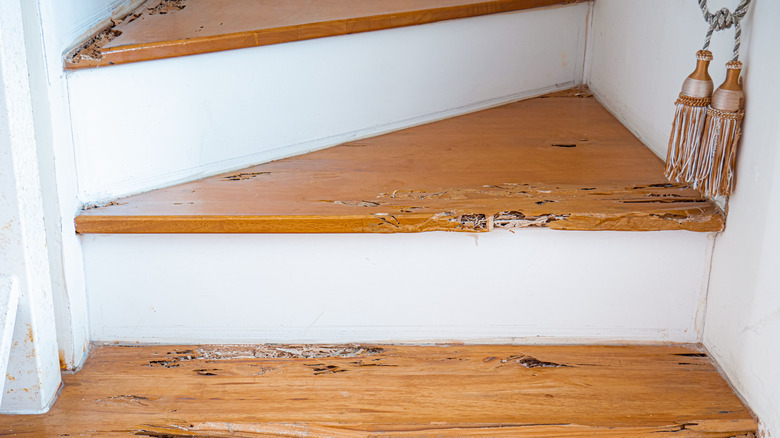Throw Your Wood Furniture Away Immediately If You Notice This
We all want a comfortable home that's stylish and that reflects our personalities, and while home renovations often mean creating additional features such as installing a gas fireplace or building an awesome home bar, it can also mean throwing out items that no longer serve a purpose or getting rid of things that are damaged or unsafe.
More often than not, it is easy to know when to replace or remove worn-out items in the home. Other times, however, the signs evade us, especially with items that we have become emotionally attached to. The Basic Woodworking explains that this is particularly true with things like family heirlooms and antique wooden furniture, which once were sturdy and valuable, but now seem to be past their prime. If you're wondering just when is the right time to replace your wooden furniture, there are several signs to look out for that could signify the end of its useable life.
Excessive peeling and cracking
According to Vintage MillWerks, solid wooden furniture has a lifespan of about 10 to 15 years, while heirloom-quality, handmade items can often last up to 100 years! Custom Wood Carving also notes that you can further extend the life of your wooden pieces through periodic cleaning with soapy water along with regular dusting and waxing.
On the other hand, neglecting to care for your wooden furniture pieces by exposing them to direct sunlight, sharp objects, chemicals, heat, humidity, and excess water can all bring them to an untimely end, suggests Mr. Right Ideas. This petering out usually leads to excessive cracking of the wood and peeling of the paint. Unsurprisingly, Obsession Outlet explains that these are clear indicators that it's time to replace your wooden furniture. Alternatively, for the pieces that you really can't throw away, there are plenty of creative ideas if you would rather repurpose them.
Noisy interruptions
If you've ever tried to sleep on an old wooden bed that creaked noisily, you will have noticed that it's not only irritating but that it also feels somewhat unsafe. As to why wooden furniture creeks over a period of time, Furnishing Tips wrote that since wood is a natural product, it will expand and contract when subjected to heat or cold temperatures. When this cycle of expansion and contraction persists over several years, your wooden furniture may start to creak quite alarmingly. In addition, if your furniture incorporates other materials in its build, that creaking may become a more severe series of pops and cracks.
SFGate notes that there are several useful ways to stop furniture from creaking. However, if you have exhausted all means to eradicate the noises, but nothing seems to be working, it may be time to replace the item, suggests Home Lane. While it is true that you could simply throw it out, a more eco-friendly option would be to donate it to charity or sell it to a recycler.
Wobbly legs and wear and tear
Wooden chairs and tables are the types of furniture most likely to develop wobbly legs, whereas countertops and sideboards are more susceptible to wear and tear. According to WikiHow, the legs of a wooden chair may start to wobble if some parts are broken or missing, the joints are overworked, or one leg is shorter than the rest. On the other hand, cabinets and countertops wear out differently; The Washington Post explains that leaving hot things directly on their surfaces, not removing standing water, or using metal implements to scrape off spills will all damage the finish and integrity of a piece.
In some instances, it is possible to repair wobbly legs and scratches, states Popular Mechanics. However, these solutions only work when the problem is still fresh and not too serious. But, if the damage is irreparable then it's better to discard the furniture rather than put your safety and that of your family at risk.
Mass termite invasion
No matter how much you love your vanity dressing table or your antique chest of drawers, you can be sure that wood termites love it more! According to Certified Termite & Pest Control, dry wood termites are incredibly voracious and sneaky. Most accidentally find their way into your home by hitching a ride on an infested wooden item that you just brought in. Once inside, they invariably head towards your most prized pieces of furniture, and before long you will start to notice those telltale small holes appearing.
Certified Termite & Pest Control also mentioned how a few dry wood termites can quickly grow into a large population, eating up the interior of your wooden piece without you knowing. Unfortunately, there is nothing you can do to salvage the infested furniture as the internal composition that gave it strength and structure is now missing. In this case, the furniture needs to be thrown out or even burned to ensure they don't return and cause even more damage.
Discomfort or a demand for space
The primary reason why we update our homes and living spaces with new furniture is to improve comfort. But if you find that your furniture is causing aches or pains then it's definitely time to get rid of it. For example, if your bed becomes a source of back pains, your drawers and dresser become too difficult to open and close, or the patio furniture collapses under your weight, The Spruce recommends that it is time to replace them.
Moreover, if you're a follower of trends and often find yourself doing everything possible to make sure your home is updated with modern furniture and the latest appliances, throwing away outdated wooden furniture is a no-brainer. Similarly, if you want to create more space in your home, replacing oversized furniture pieces with smaller, more durable ones can be a smart way to go about it.





